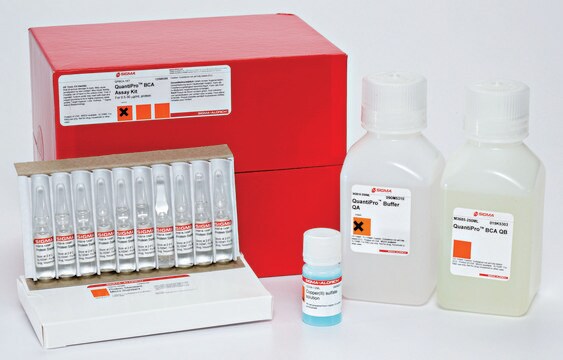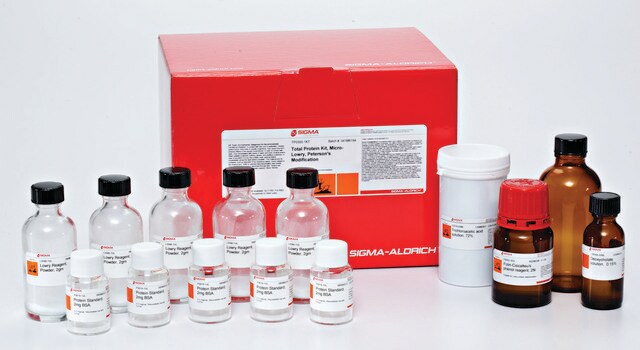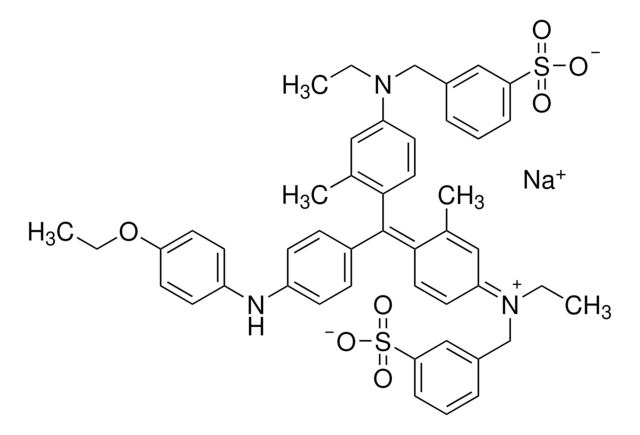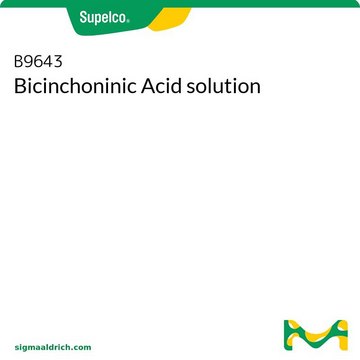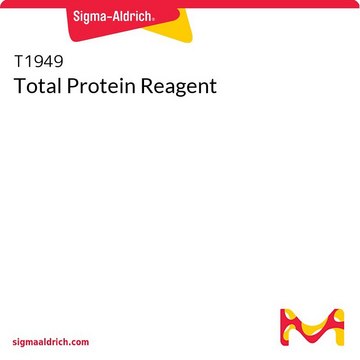Recommended Products
description
wavelength 595 nm
total test time 2 min
working reagent stability 18-26°C for 2 weeks
dynamic range 50 mg/dL 0.5 g/L
Quality Level
parameter
18-26 °C temperature
50 μL sample volume
storage temp.
2-8°C
General description
Application
- total protein in the bacterial homogenate by Bradford method
- total protein content by the Bradford microassay from the tissue extracts
- serum total protein
- soluble protein content by the Bradford method from leaves
Biochem/physiol Actions
Suitability
Principle
Testing Method
signalword
Danger
Hazard Classifications
Acute Tox. 4 Dermal - Acute Tox. 4 Inhalation - Acute Tox. 4 Oral - Aquatic Chronic 2 - Eye Dam. 1 - Flam. Liq. 3 - Met. Corr. 1 - Skin Corr. 1B - Skin Sens. 1 - STOT SE 1
target_organs
Eyes,Central nervous system
Storage Class
3 - Flammable liquids
flash_point_f
132.8 °F
flash_point_c
56 °C
Certificates of Analysis (COA)
Search for Certificates of Analysis (COA) by entering the products Lot/Batch Number. Lot and Batch Numbers can be found on a product’s label following the words ‘Lot’ or ‘Batch’.
Already Own This Product?
Find documentation for the products that you have recently purchased in the Document Library.
Customers Also Viewed
Our team of scientists has experience in all areas of research including Life Science, Material Science, Chemical Synthesis, Chromatography, Analytical and many others.
Contact Technical Service


